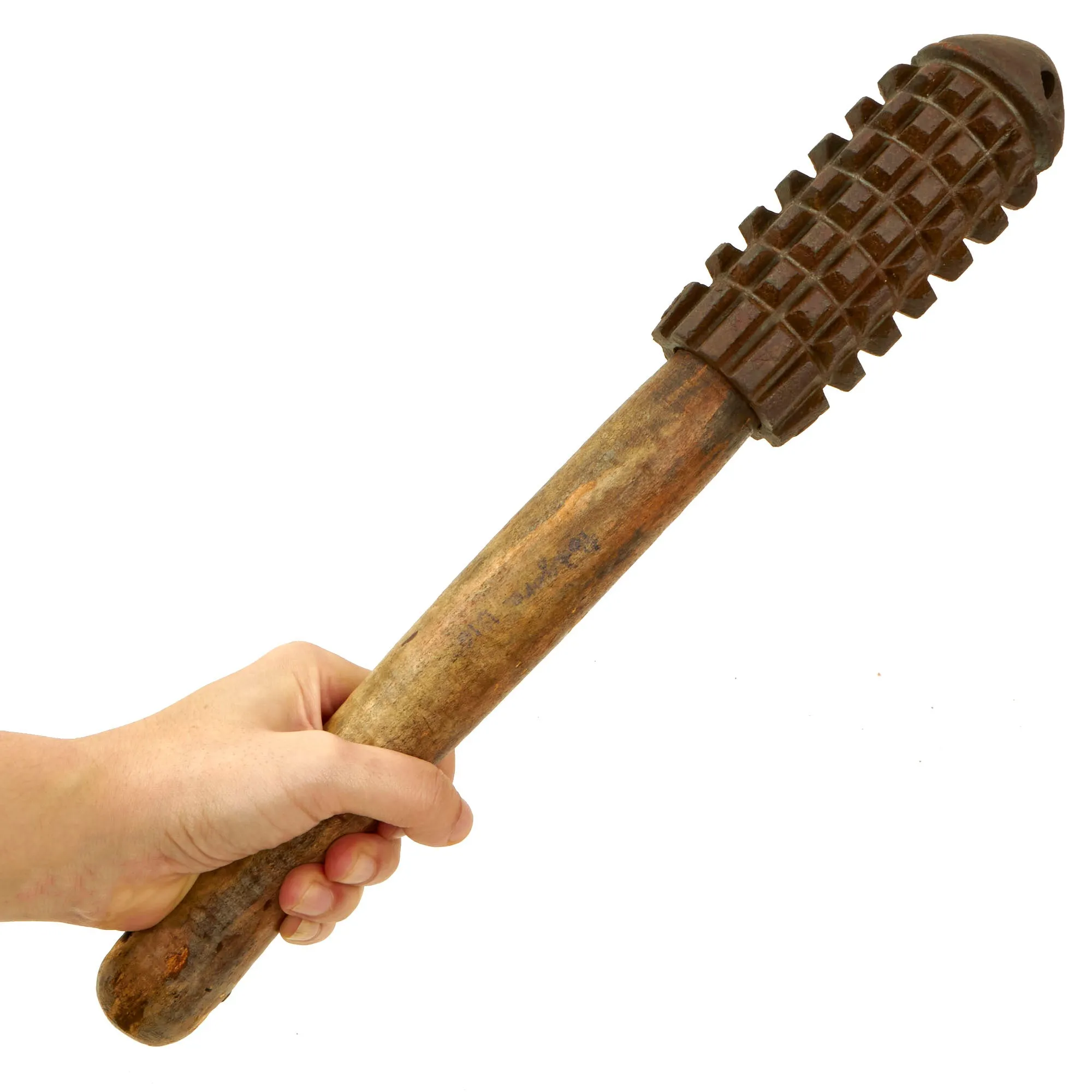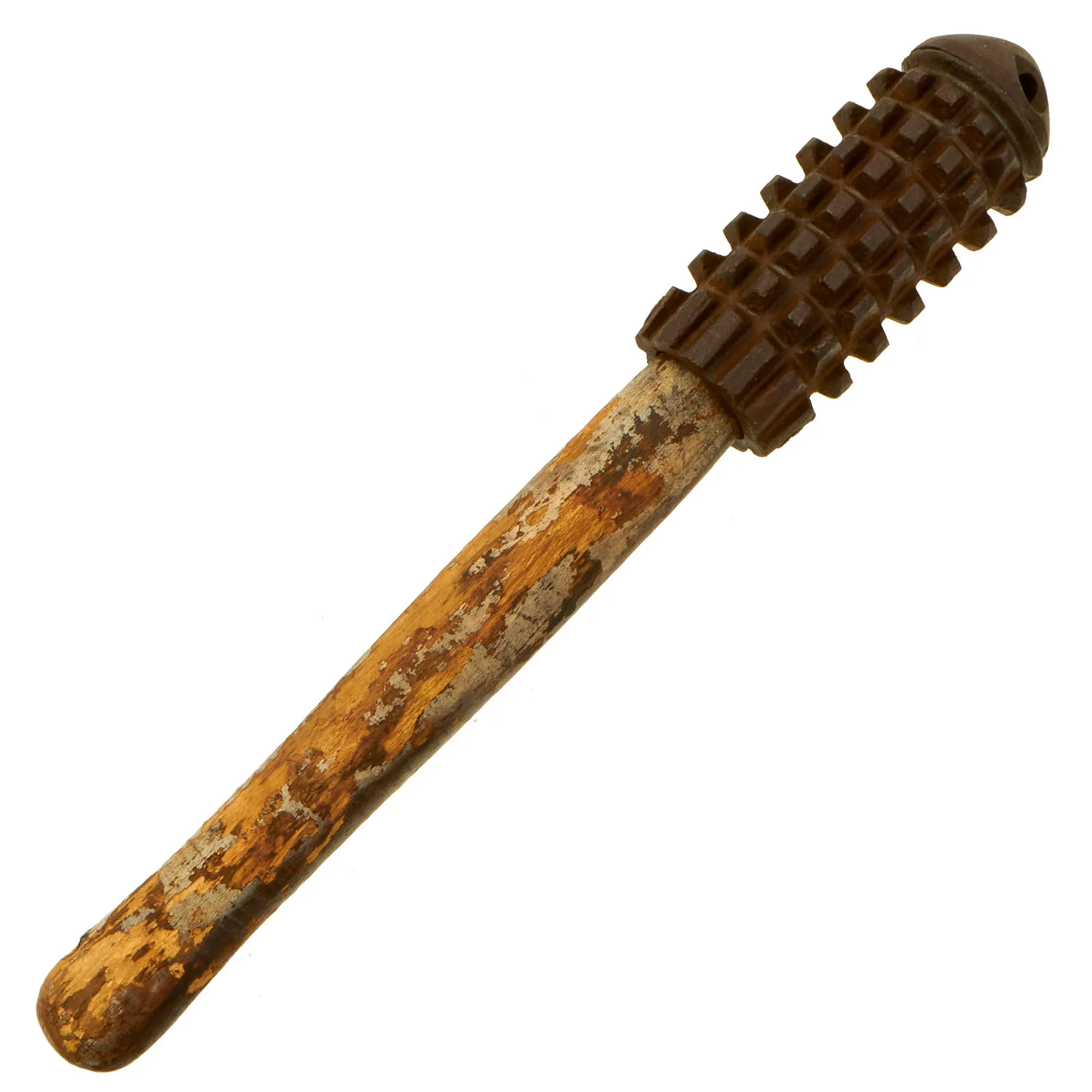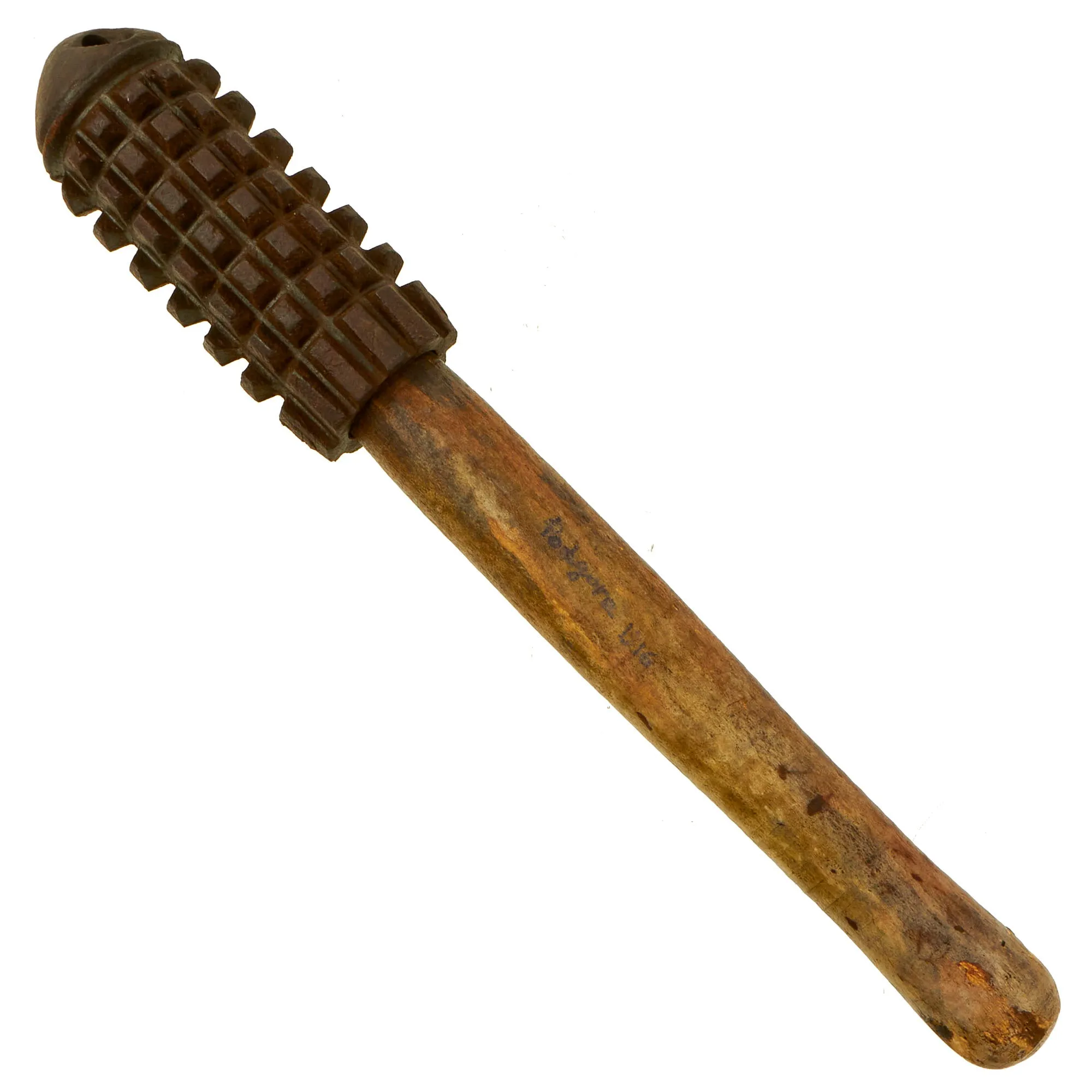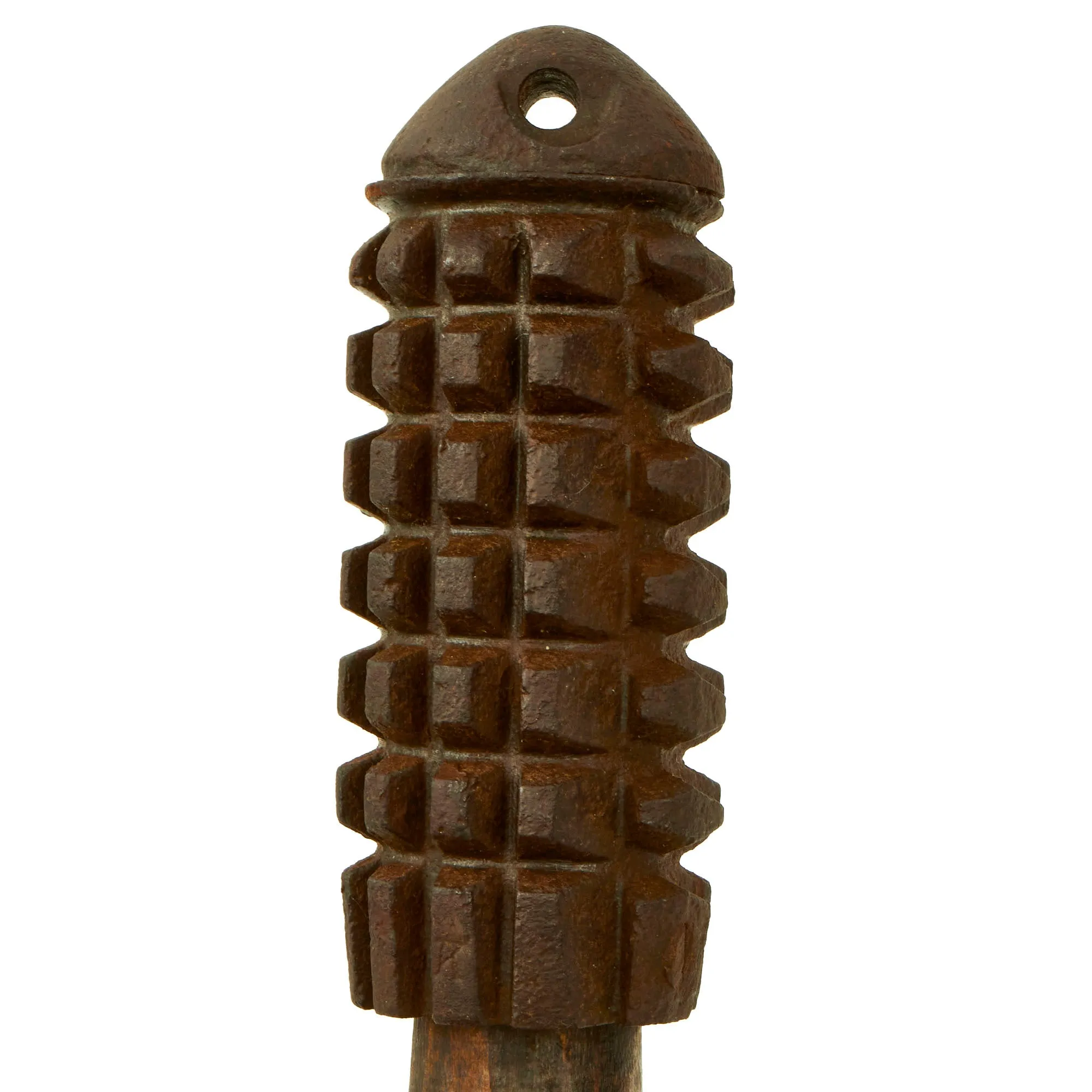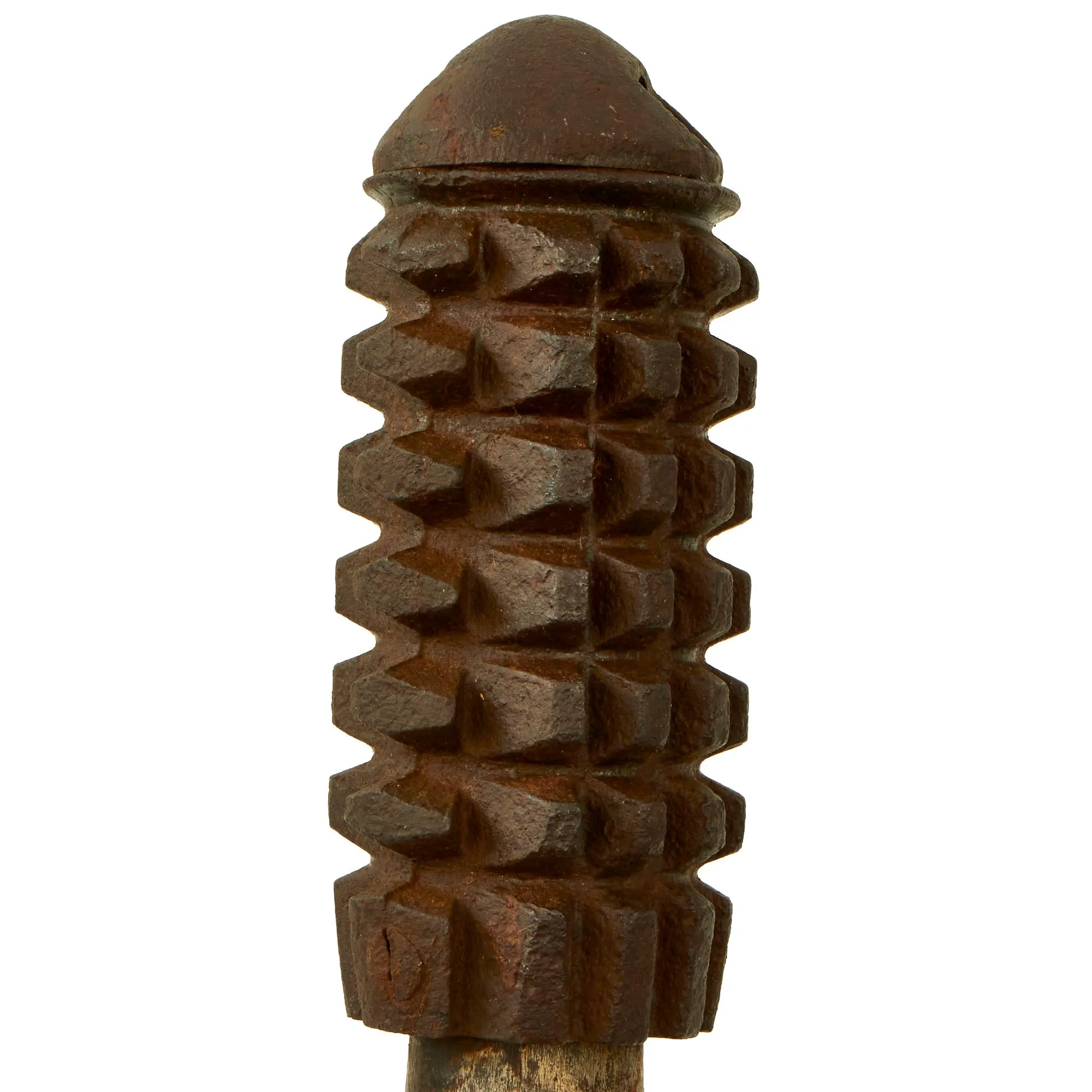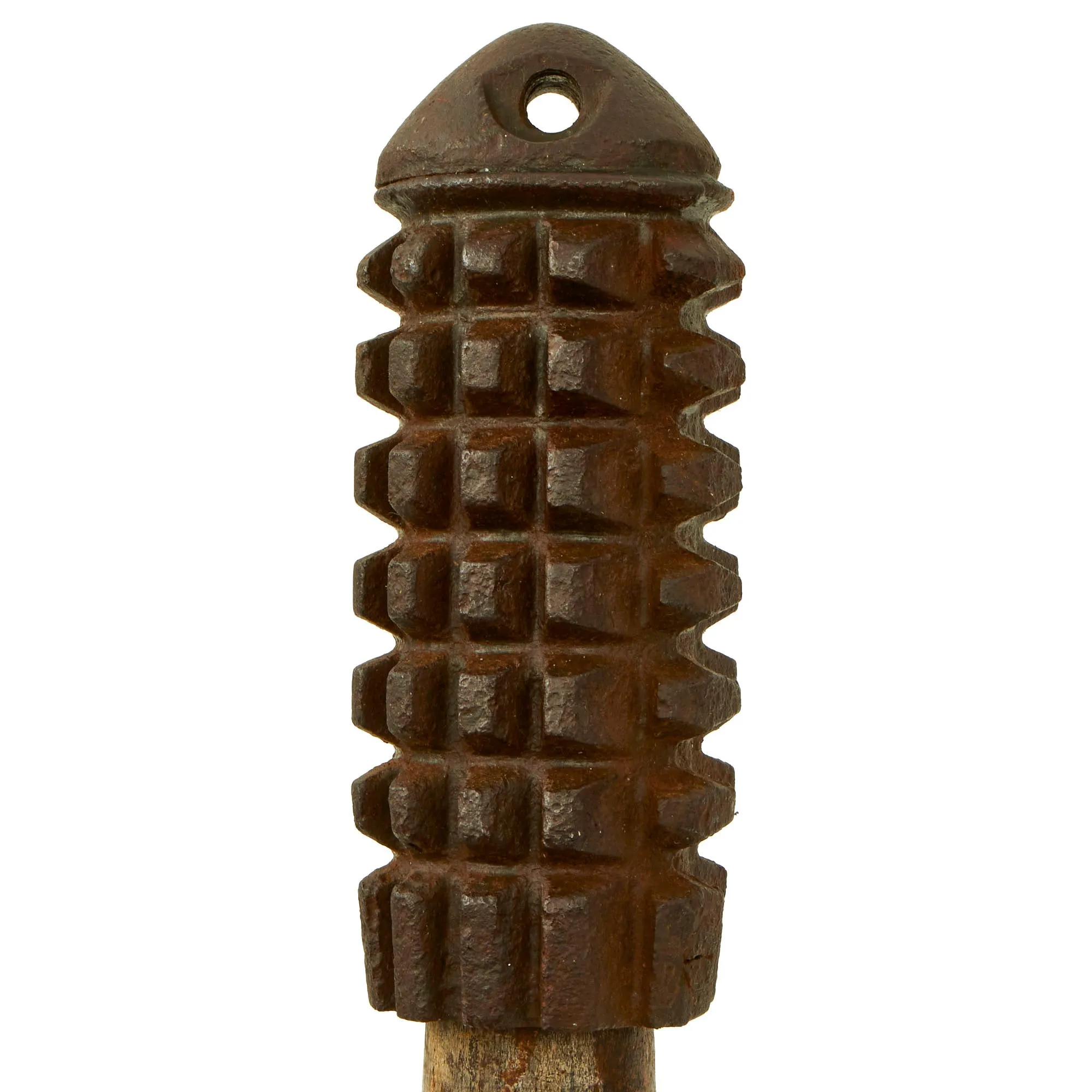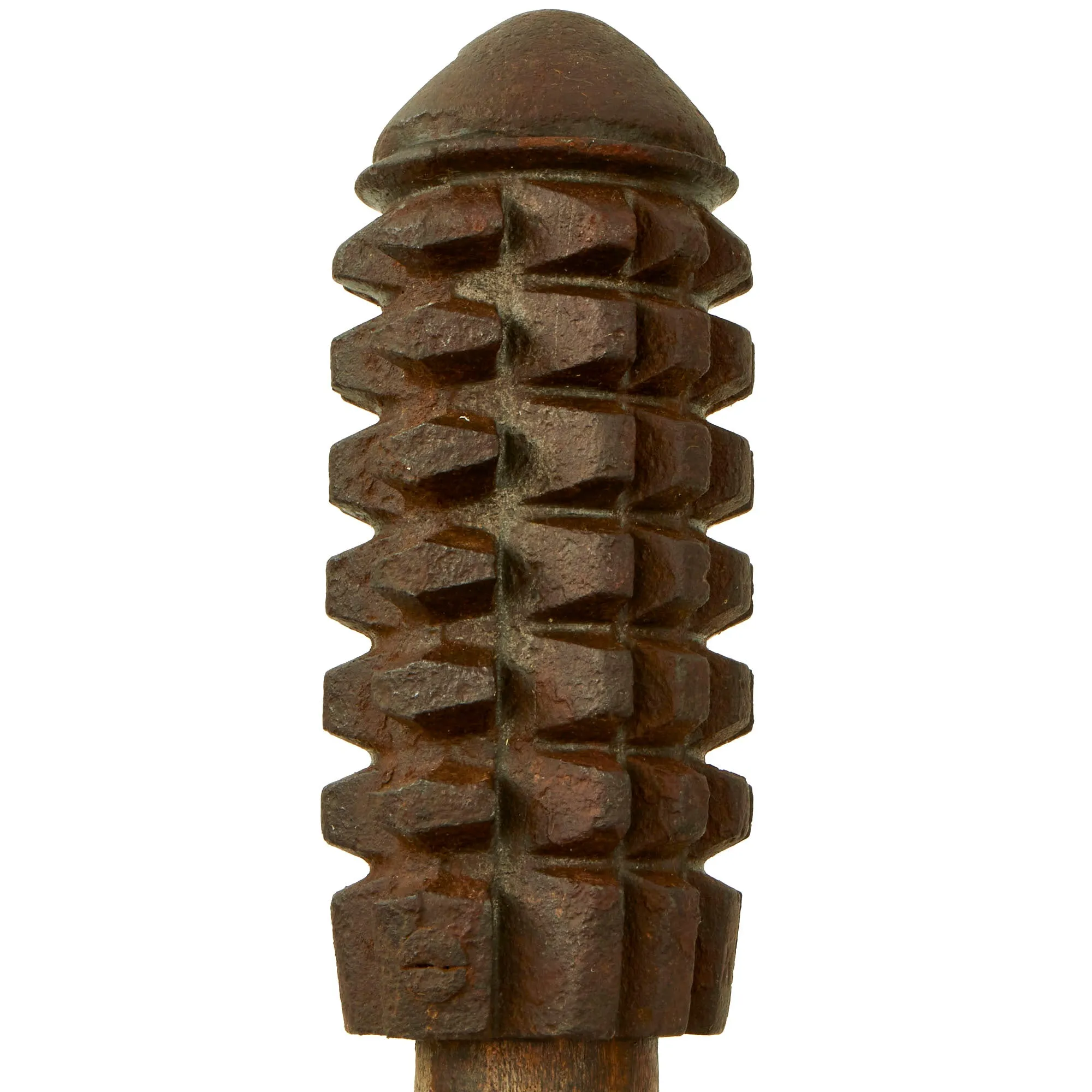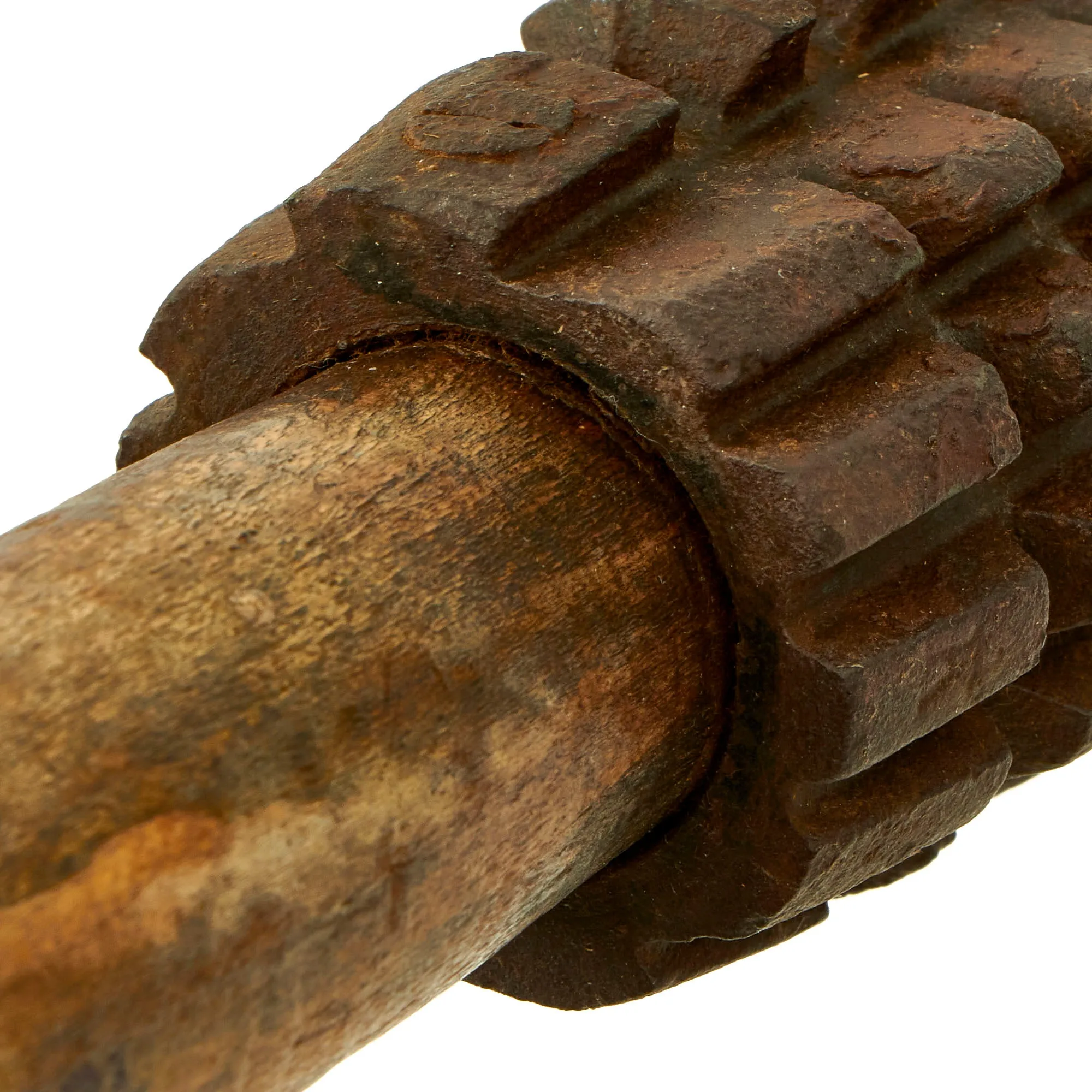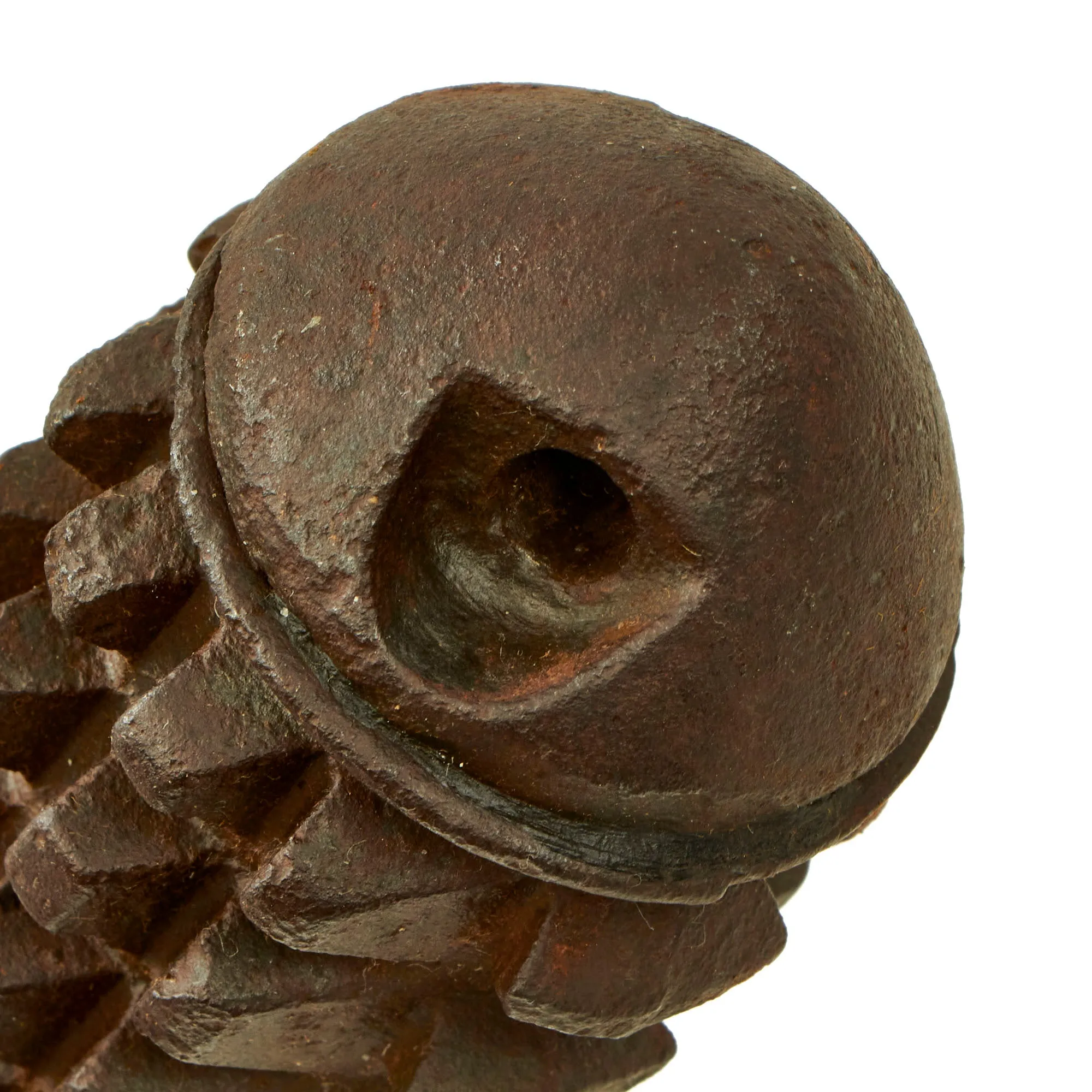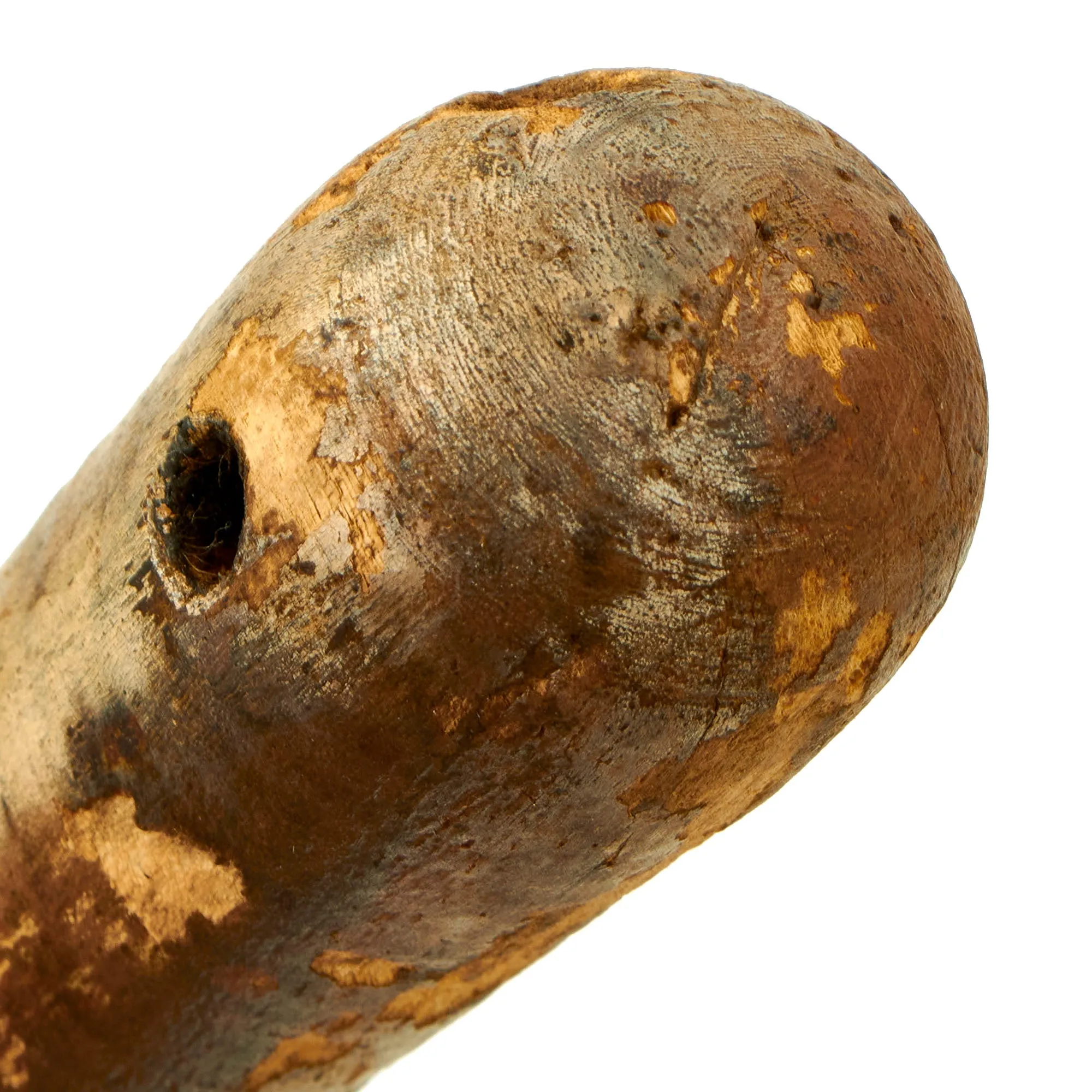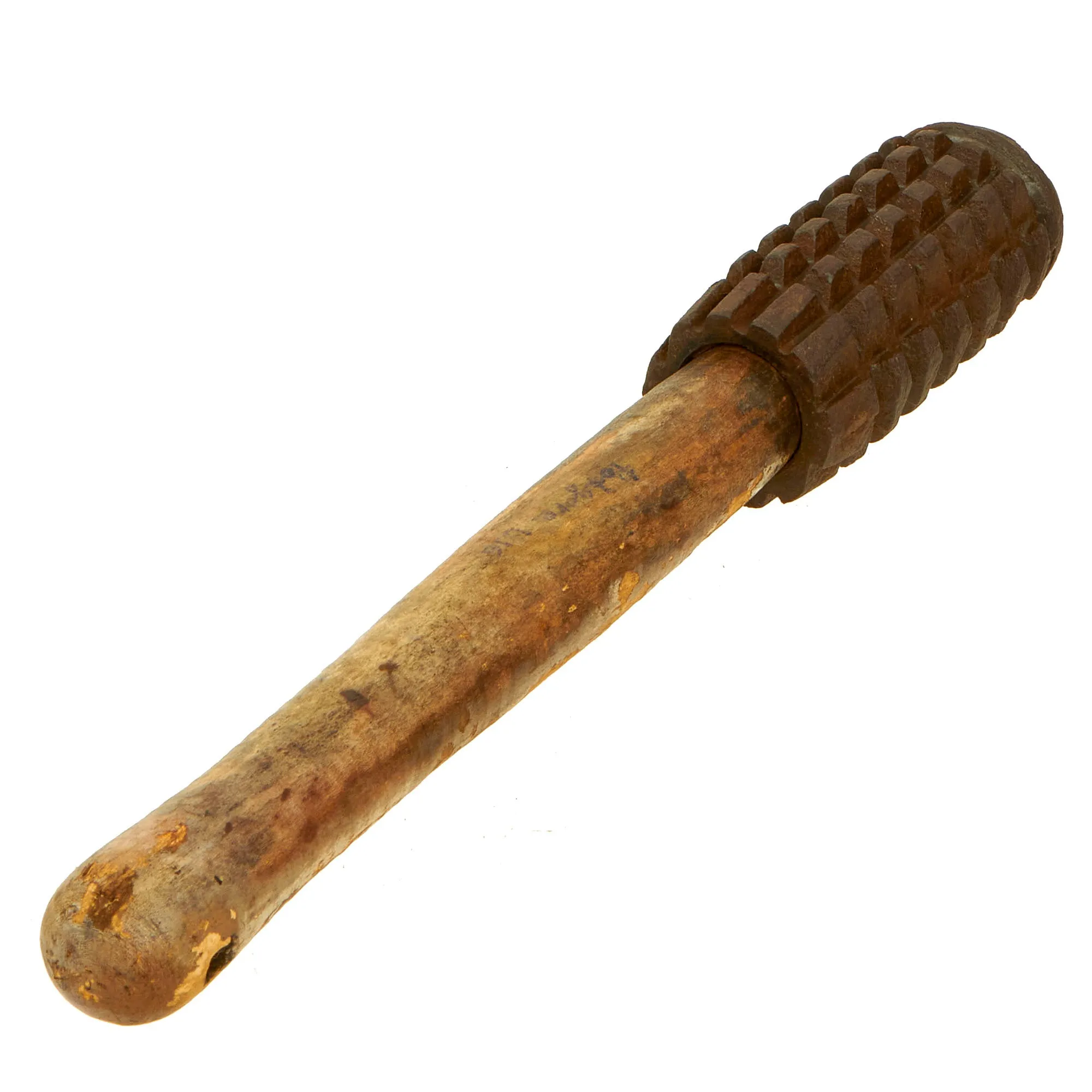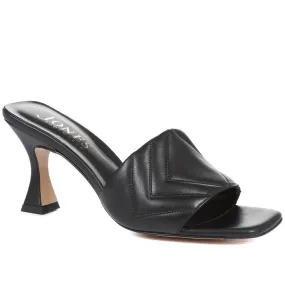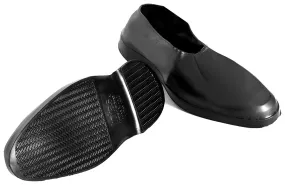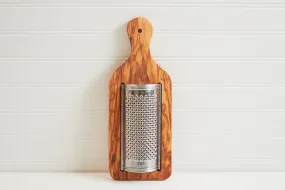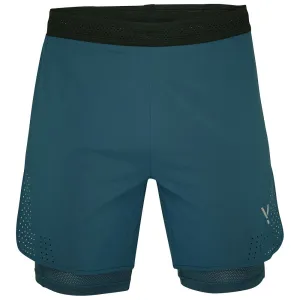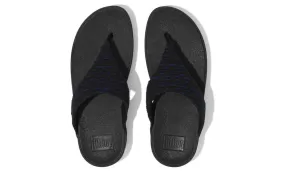Original Item: One-of-a-kind. Purchased directly from David F. Machnicki, the author of At Arm's Length Trench Club book Series. We were told that this club will be featured in the upcoming Volume three of the series
This is a genuine World War one Austrian Trench Club of a simple design by using readily available materials. The total length for the club approximates 14.5 inches. The head of this Austrian club was created by using a remnant of a cylindrical cast-iron body from an Austro-Hungarian WWI 1st Model Zeitzünder Gewehrgranate "Corn" Rifle Grenade. A smooth wooden handle was created and two flat-headed screws were used to secure the grenade head to the wood shaft. The wood is marked in hand writing Podgora 1918. Podgora was part of the Italian front during the First World War.
A Hole for lanyard drilled into grip. A weapon with a simple design that is short in length, easy to carry, blunt and very effective.
Total Length: 14.5 inches
Diameter at top: 2 inches
Weight: 2.2 lbs
Trench raiding clubs were homemade melee weapons used by both the Allies and the Central Powers during World War I. Clubs were used during nighttime trench raiding expeditions as a quiet and effective way of killing or wounding enemy soldiers. The clubs were usually made out of wood. It was common practice to fix a metal object at the striking end (e.g. an empty Mills bomb) in order to maximize the injury inflicted. Another common design comprised a simple stave with the end drilled out and a lead weight inserted, with rows of large hobnails hammered in around its circumference. Most designs had some form of cord or leather strap at the end to wrap around the user's wrist. Bosnian soldiers serving in the Austro-Hungarian army were fond of using maces. They were also used by officers to finish enemy soldiers wounded by poison gas attacks.
Trench clubs were manufactured in bulk by units based behind the lines. Typically, regimental carpenters and metal workers would make large numbers of the same design of club. They were generally used along with other "quiet" weapons such as trench knives, entrenching tools, bayonets, hatchets and pickaxe handles – backed up with revolvers and hand grenades.




